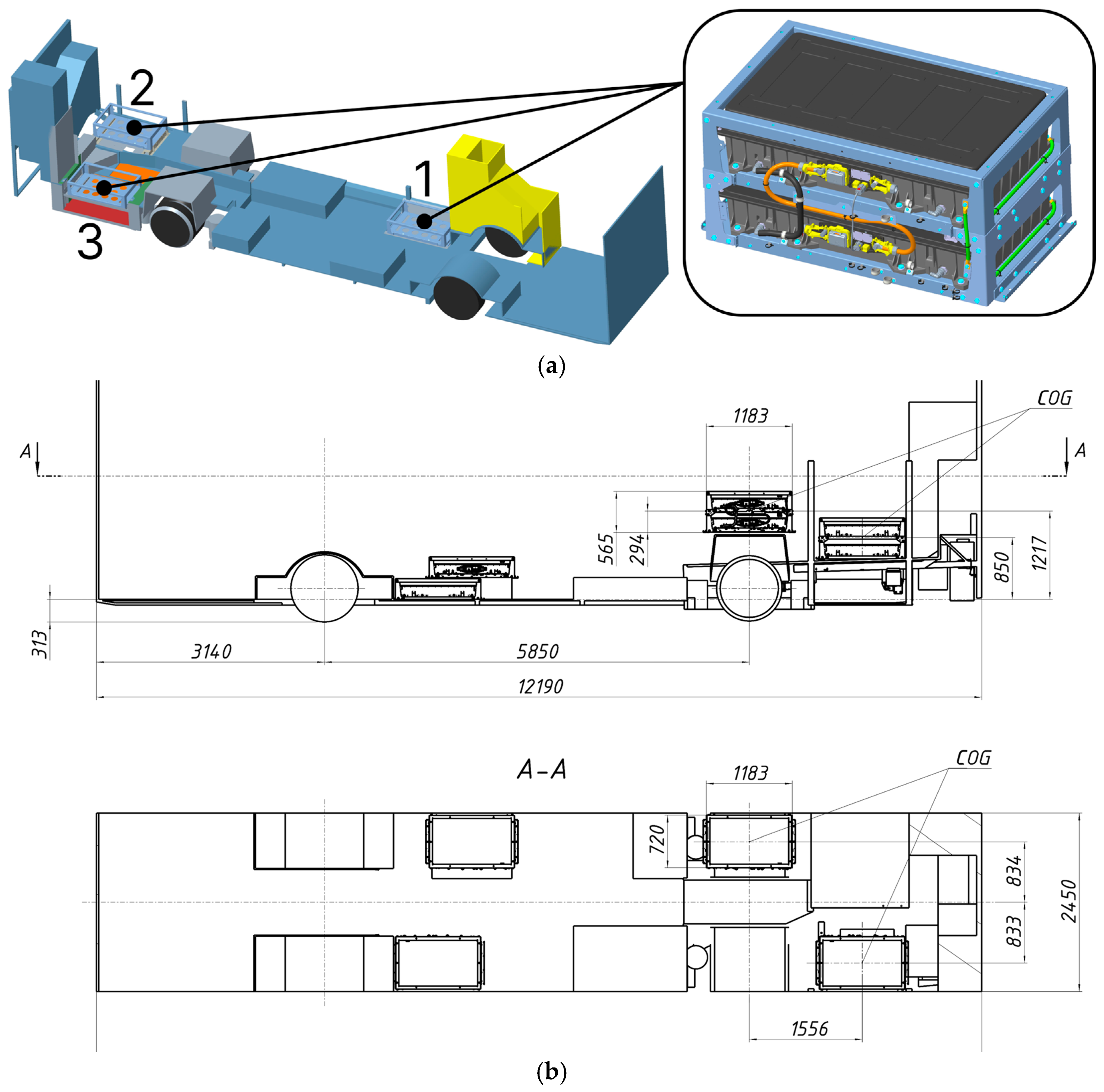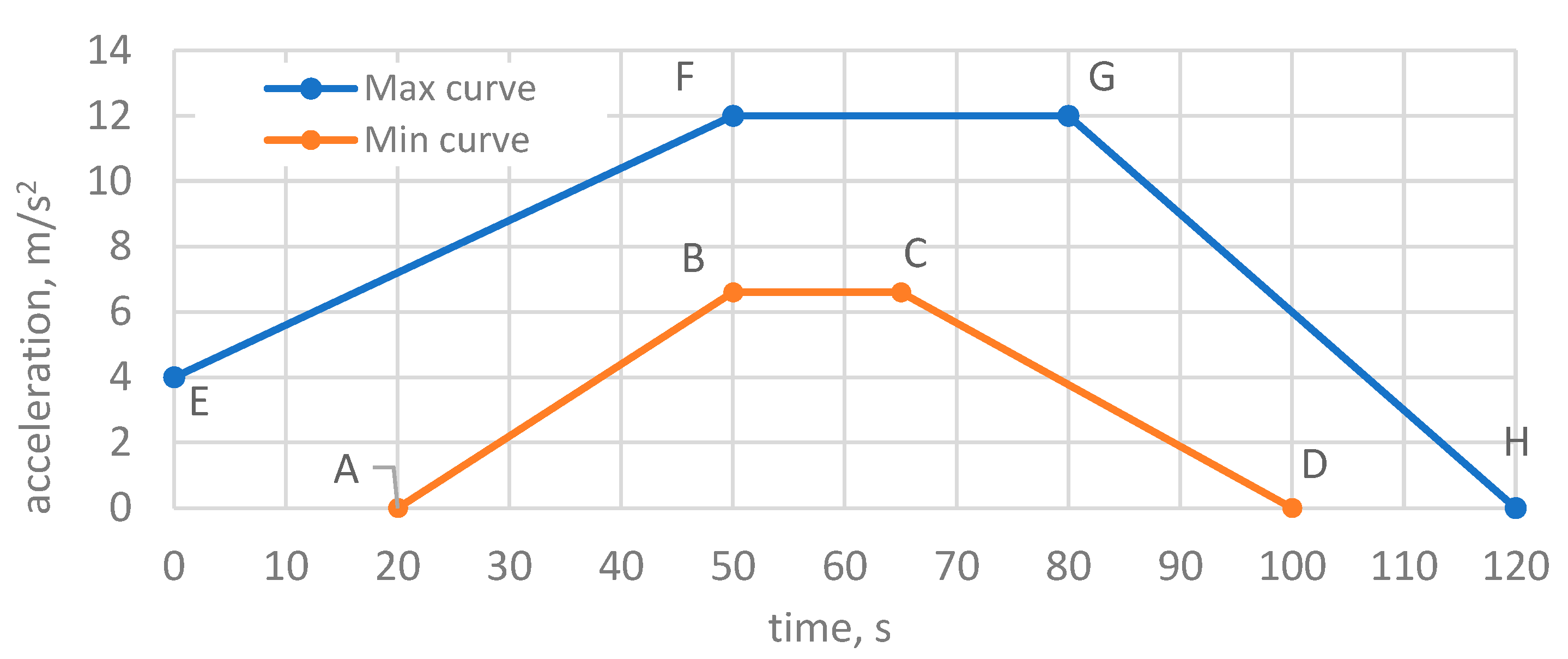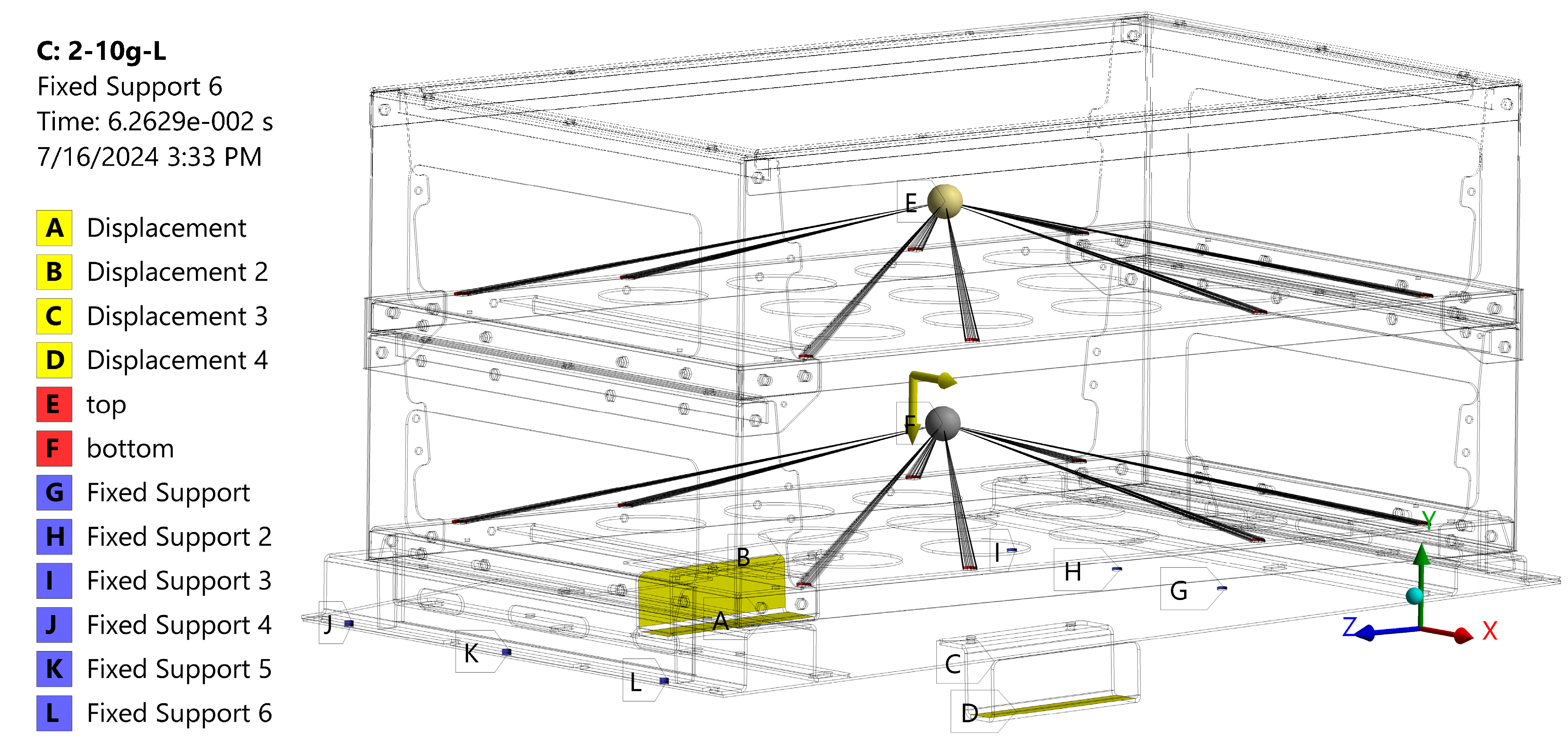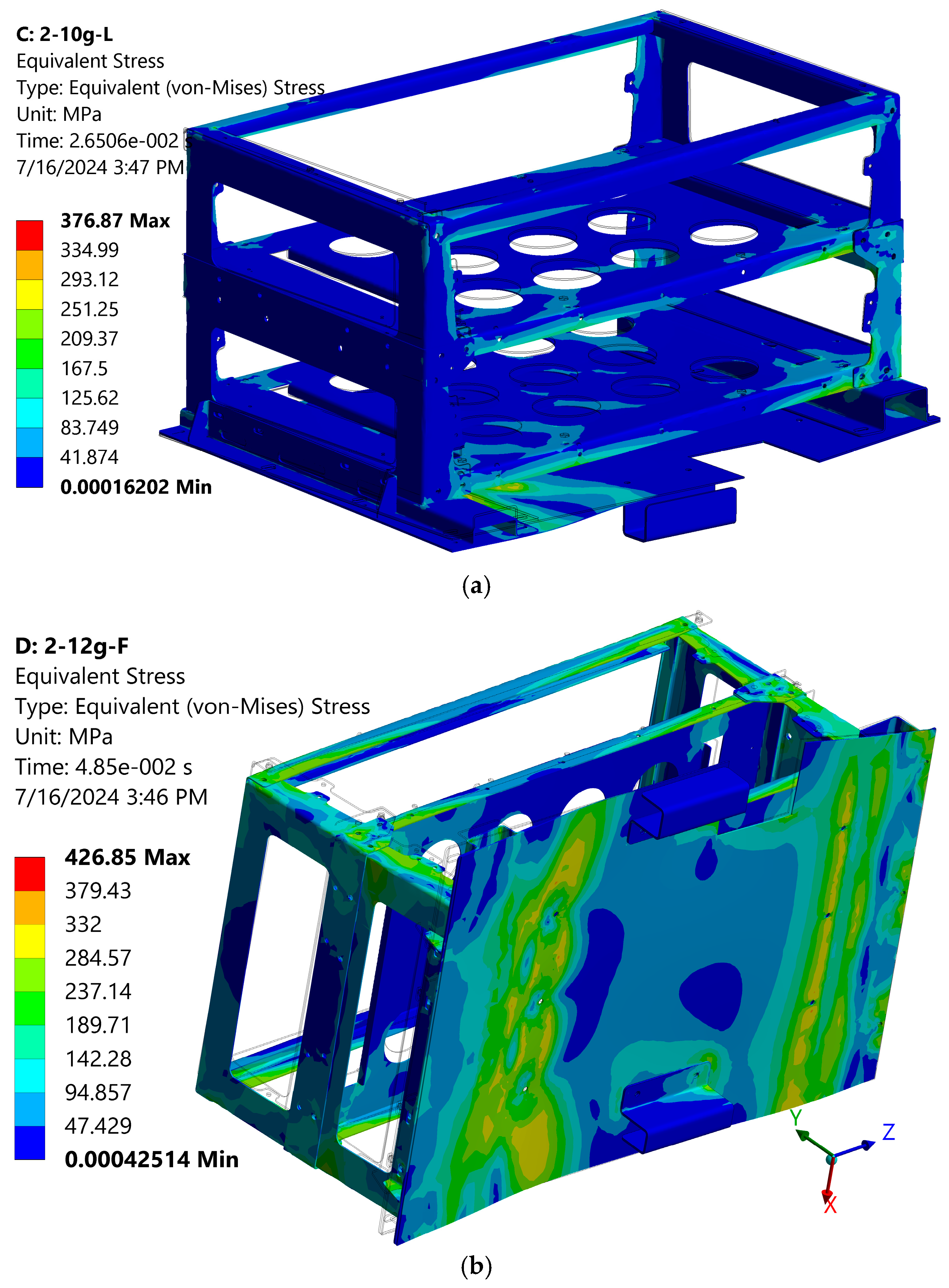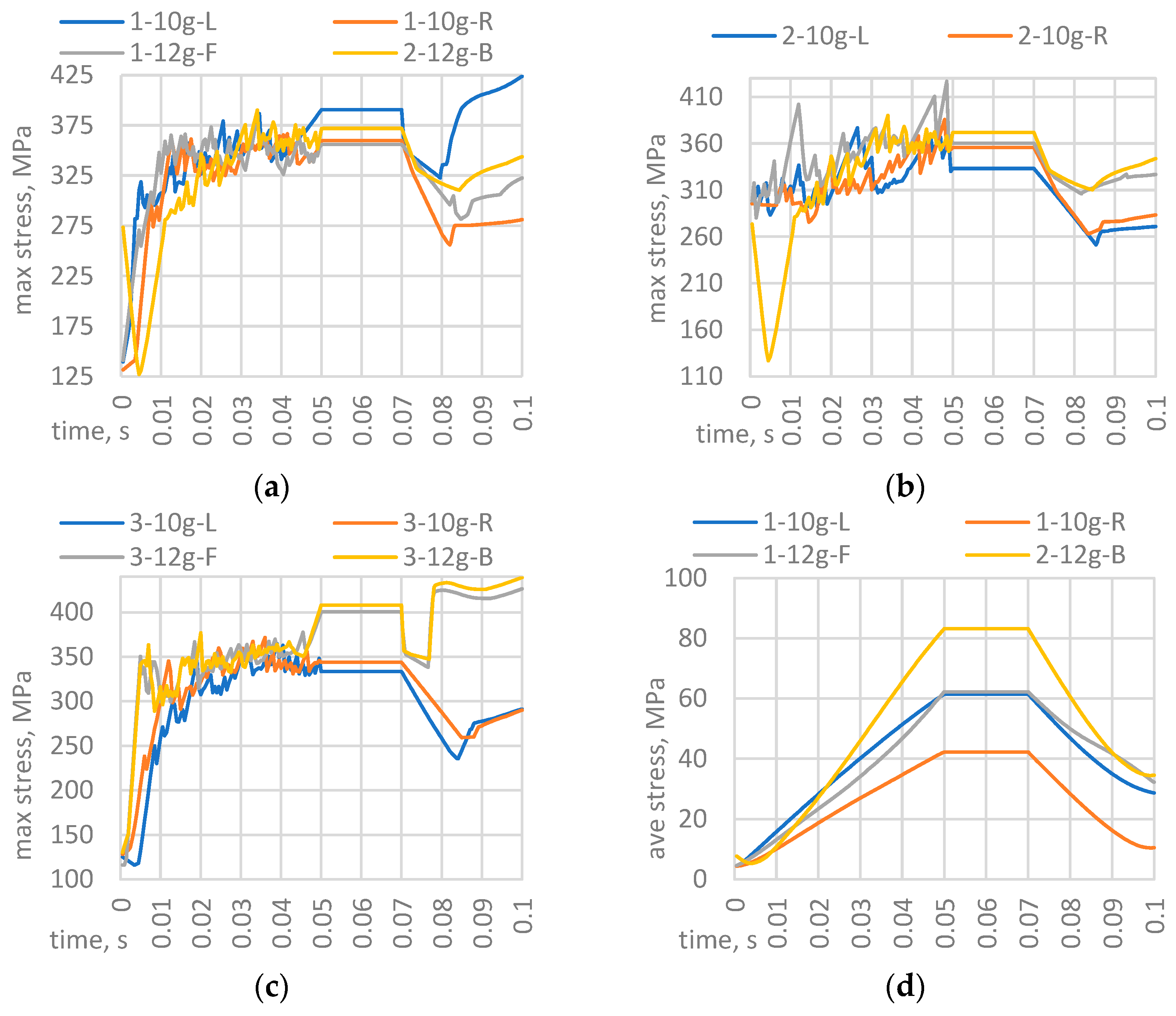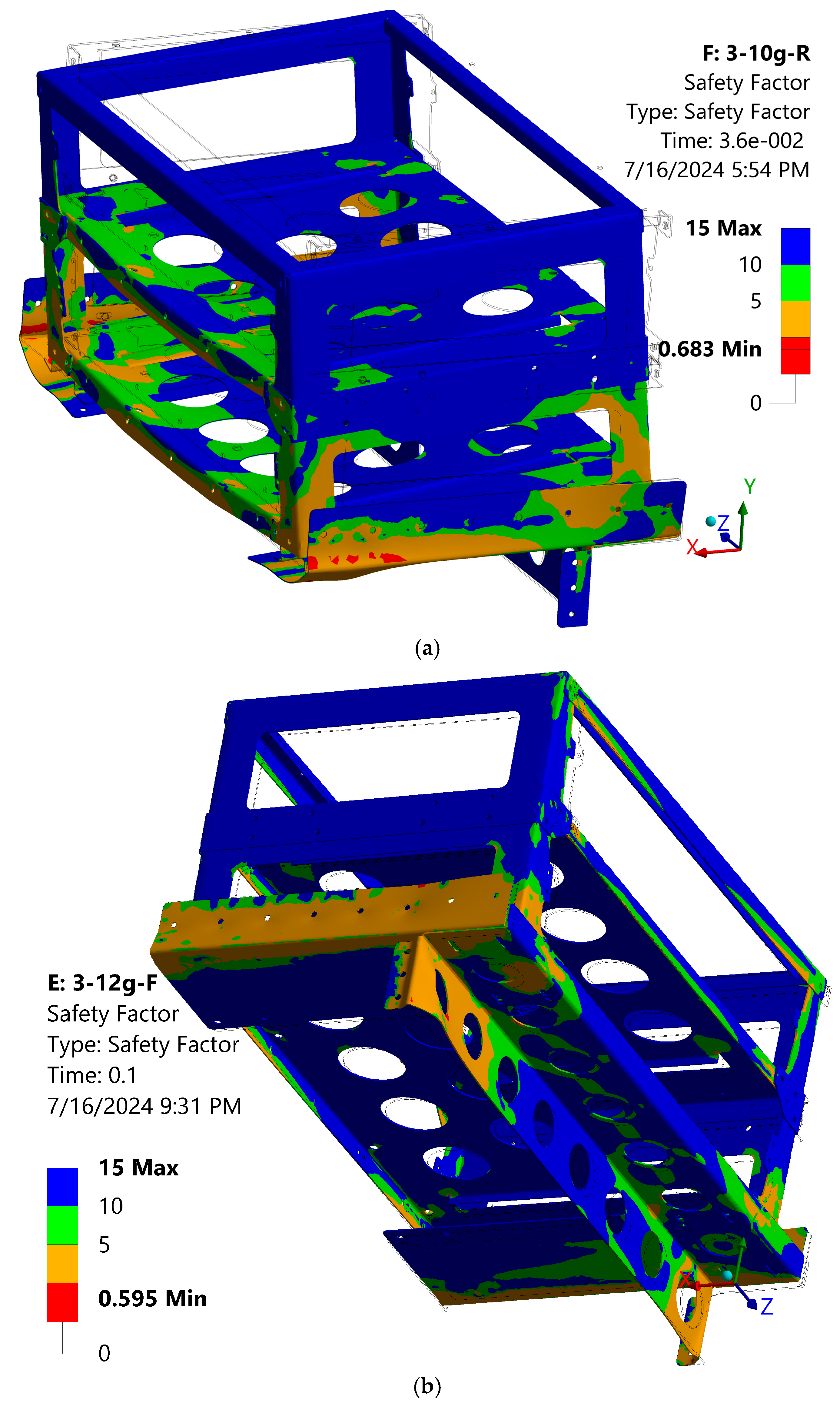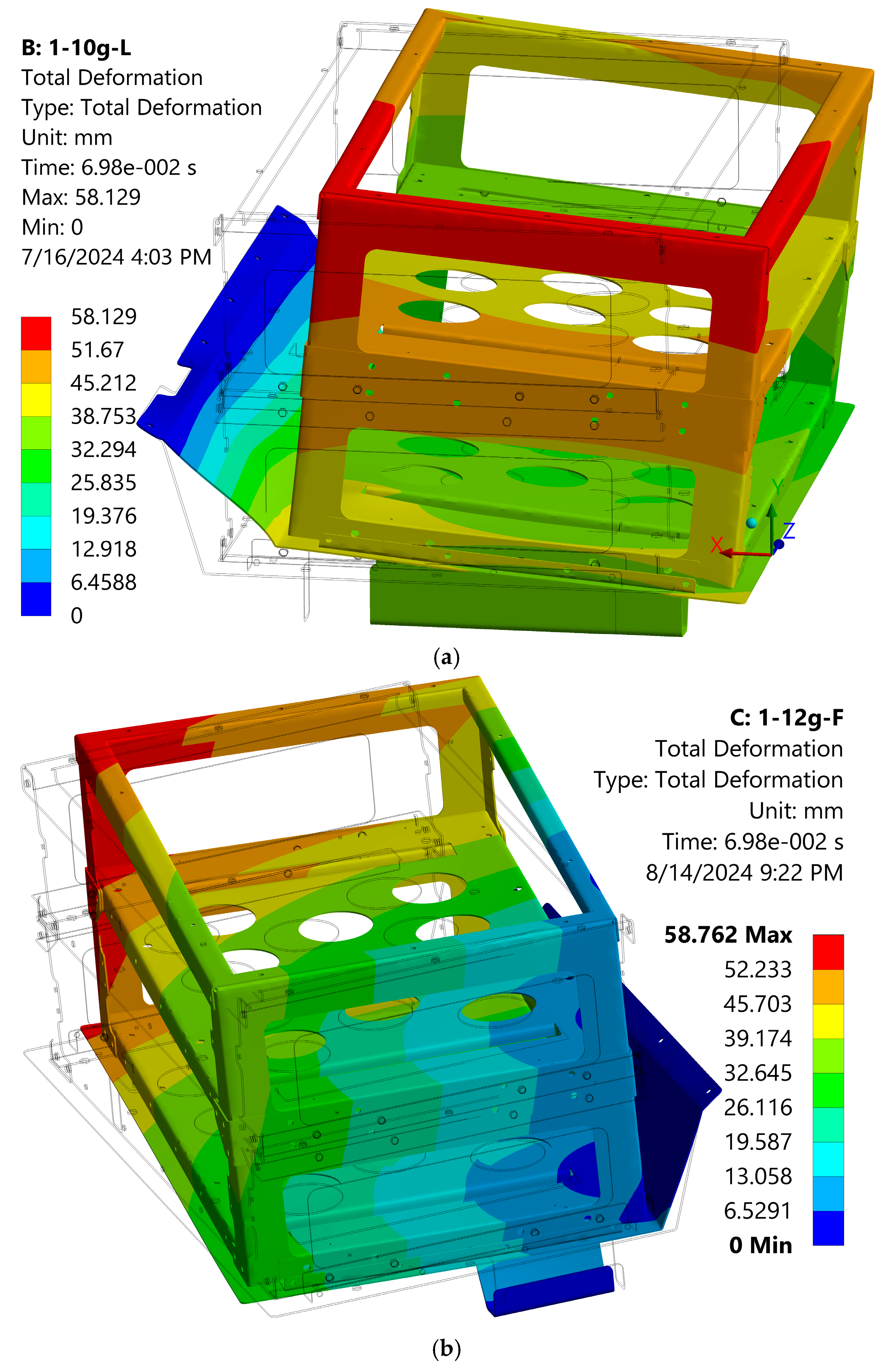1. Introduction
Cities are racing against time to clean the air, cut emissions, and electrify their transport systems. Diesel buses, once the workhorses of public mobility, have become symbols of pollution and outdated technology. Yet, replacing the entire fleet with new electric models is neither fast nor affordable. This creates a pressing need for transitional solutions that bridge the gap between current limitations and long-term sustainability goals. A promising alternative emerges: what if humanity could transform the old into new by electrifying diesel buses already on the road? Buses are not just a mode of transport—they are the circulatory system of modern cities, influencing air quality, energy consumption, and public health.
To appreciate the scale of this transition, it is essential to understand the composition of the current bus fleet. According to the Coöperatieve Rabobank U.A. research and ACEA (European Automobile Manufacturers Association) statistics, in 2023, there were around 750,000 buses in total, with 535,000 designated for intercity routes and 215,000 serving urban areas, making buses a crucial component of the transportation infrastructure. Most of these buses are diesel-powered, but the adoption of electric ones has been on the rise. The momentum is shifting, albeit gradually, as policy, innovation, and public awareness converge. This trend is particularly evident in the fleet segment utilising alternative fuels, where the number of electric models increased by 11,000 last year, nearly doubling the previous count. Only 2% (18,000) of the entire bus fleet consists of battery electric vehicles (BEVs), plug-in hybrid electric vehicles (PHEVs), and hydrogen-powered vehicles (H2). This underlines a critical gap between climate policy goals and the current technical reality. As predicted, electric city buses have surpassed diesel in new registrations within the EU (European Union), achieving a 41% share of all new city models in 2023. This marks a significant milestone, especially considering that BEVs accounted for only about 10% of new city bus registrations. Such a shift signals a transformative moment for urban transport, where electric models are no longer niche but a growing norm. The trend is evident—the EURO 7 will be applied to cars and vans from July 2030, and buses and trucks (M2, M3, and N2, N3 categories according to UNECE classification) in the next 12 months. The tightening of emission standards will likely serve as a catalyst, accelerating the need for practical electrification strategies, including the conversion of existing fleets.
The observed sharp contrast between new registrations and the legacy fleet raises an urgent question: What will happen to the existing fleet of around 215,000 diesel buses mentioned earlier, the engines of which will not be able to meet the limits of NOx (nitrogen oxides) and other emissions? Meeting the tighter NOx limits requires advanced and expensive after-treatment systems, such as selective catalytic reduction (SCR) and more effective diesel particulate filters (DPFs), which add to the complexity and cost of diesel vehicles (according to the aforementioned AECC association). These technologies, while effective, push the boundaries of economic feasibility, especially for older buses nearing the end of their life cycles. As a result, it is economically more profitable to convert diesel buses to electric ones. Several additional UNECE (United Nations Economic Commission for Europe) certification requirements are imposed in this case. This introduces a new layer of complexity: transforming legacy vehicles is not just a technical challenge, but a regulatory one.
Among the key hurdles in diesel-to-electric conversion are the international safety certifications, initially designed for factory-built electric vehicles, not retrofits. For example, the UNECE R100 (uniform provisions concerning the approval of vehicles about specific requirements for the electric power train) [
1] is the safety requirements concerning the electric drive of road vehicles of categories M and N1, the maximum design speed of which exceeds 25 km/h and which are equipped with an electric drive, except vehicles with a permanent connection to the network. Retrofitted buses, though mechanically sound, must now be evaluated through the same lens as newly manufactured electric vehicles. The development of an applicable simulation methodology in accordance with R100 is the subject of the current research. Establishing such methodologies is a vital step in streamlining certification, reducing development time, and accelerating fleet-wide transformation.
While electric vehicle safety has been broadly studied, the unique challenges posed by retrofitting diesel buses to electric powertrains remain underexplored. While numerous studies address frontal crash behaviour in electric vehicles, few tackle the nuanced structural risks introduced by converting existing diesel platforms. The UNECE R100 regulations are related to the impulse impact and foresee the transverse 10 g and longitudinal 12 g (frontal impact) accelerations. This focus on specific acceleration parameters highlights the strict safety standards that converted buses must meet to be viable on the road. It is evident that the re-equipment of diesel buses with electric ones is just beginning its trend; therefore, there is a lack of scientific research on the impacts of R100. On the other hand, the exact nature of the frontal impact of buses is particularly presented in relevant scientific publications dedicated to the UNECE R29 and NCAPs (New Car Assessment Programs) regulations (in the case of R100, the analysis of the results is performed mostly locally—on the battery blocks). These studies provide valuable insights but do not fully address the structural complexities of retrofitted vehicles as a whole. Thus, in works presented by Holenko et al. [
2], the validation of frontal crashworthiness simulation for low-entry type buses is investigated according to UNECE R29 requirements. Key findings include the observation that city buses, unlike suburban and intercity models, have lower stiffness in frontal collisions. This necessitates the inclusion of deformation zones in new models, which are currently lacking in most city buses, and signalise that low-entry and low-floor buses have a significantly lighter front end compared to traditional designs. Yang et al. [
3] evaluated the structural safety of a newly developed hydrogen fuel cell city bus body frame using finite element analysis under four conditions: horizontal bending, ultimate torsion, emergency cornering, and braking. While the initial design met the stiffness and vibration criteria, stress levels exceeded the material’s yield strength under torsion and cornering. Size optimisation of frame components reduced peak stresses by up to 20.13%, ensuring compliance with strength requirements and achieving a 106 kg weight reduction. This demonstrates the importance of structural optimisation to balance safety and efficiency in next-generation bus designs. Frontal impact on the bus superstructure, as per UNECE R29 and NCAP, is a subject of [
4]. The study [
5] investigates the crashworthiness of crash box components using finite element models sourced from NHTSA (National Highway Traffic Safety Administration) vehicle data. Key parameters—energy absorption, crush force efficiency, and specific energy absorption—were analysed and optimised through RSM (Response Surface Methodology) design of experiments. Reduced-order models using the sPGD (sparse Proper Generalised Decomposition) method achieved 90% accuracy in capturing nonlinear behaviour. Results showed a 34.33% improvement in energy absorption and an 18.91% mass reduction in heavier variants without compromising performance. These advances illustrate how sophisticated computational methods can lead to safer and lighter bus components.
Building upon this progress, further studies are exploring how these methods can be applied to improve passive safety technologies in specific bus configurations. The study [
6] aims to develop new passive safety technologies for coaches, focusing on driver safety during frontal collisions, using UNECE R29 regulations to guide experimental and numerical simulations, which compare strain, acceleration, and displacement data to determine if current designs meet safety criteria or need improvements. The LSDYNA finite element analysis of the school bus frame structure as per the AIS029 (Automotive Industry Standards used in India) pendulum impact test, which is also used in the R29 regulations, is presented by Lashkari et al. [
7]. The paper [
8] aims to compare existing NCAPs with BNVSAP (Bharat New Vehicle Safety Assessment Program) and suggest improvements by analysing the experiences of older NCAPs and real-world accident data in India and other countries. In [
9], the stress analysis simulations of the welded and bolted joints method for the chassis structure of an electric low-floor medium bus are investigated. Joint integrity is critical for maintaining structural performance under impact. A robust optimisation scheme considering uncertainties and tolerance design is proposed to optimise the electric bus body frame for frontal crashes [
10]. A triple-objective robust optimisation model is created and solved with a double-loop nested algorithm combining NSGA-III (Non-dominated Sorting Genetic Algorithm III) and SQP (Sequential Quadratic Programming) methods. The results demonstrate enhanced crashworthiness and robustness under practical manufacturing conditions. Such multi-objective optimisation approaches pave the way for safer, more reliable electric buses that can meet regulatory and operational demands.
The work [
11] highlights the balance between minimising weight and ensuring occupant protection in critical collision scenarios. Yang et al.
investigated the design optimisation of a lightweight electric bus body frame, orienting the static performance and side-impact safety. Deulgaonkar et al. [
12] have used FEA (Finite Element Analysis) for various crash conditions (front, side, rear) in Ansys Workbench, estimating stresses, deflections, and energy distribution of the bus body structure. The effect of electric battery mass distribution on electric vehicle movement safety is investigated in [
13]—this problem remains a very important influence factor of the shock energy distribution. Proper battery placement not only affects vehicle dynamics but also plays a crucial role in crash energy management. Weight optimisation and structural analysis of an electric bus chassis frame are other topics of consideration [
14].
Having studied the nature of the impact (acceleration, boundary conditions, plastic deformations, etc.) based on the above publications, it is appropriate to proceed to existing research on the structure and strength of bus bodies in non-impact conditions. Understanding the structural integrity of bus frames under everyday static and dynamic loads complements impact safety research by ensuring overall durability and passenger comfort. Bagus et al. [
15] conducted a structural strength analysis of a medium bus’s floor frame, which supports static loading from the interior and passengers, comparing materials ASTM (American Society for Testing and Materials) A514, AISI (American Iron and Steel Institute) 1020, and Aluminium 2014-T4. The rise in car ownership in China has increased air pollution, making electric vehicles more attractive despite battery endurance challenges. The paper [
16] uses FEA to optimise the lightweight design of an electric bus frame using structural steel and aluminium alloy. The redesigned frame reduces weight and enhances performance by considering four driving conditions (full load bending, torsional, emergency braking, and steering). This multidisciplinary approach ensures that structural improvements translate into tangible operational benefits across a range of real-world scenarios.
While structural performance under operational loads is critical, occupant safety during collision events remains equally important. The study [
17] investigates head injury risk in bus frontal collisions, focusing on the influence of structural configuration. Finite element sledge test simulations were conducted using acceleration data to analyse how interior components and body layout affect dummy kinematics and Head Injury Criterion—HIC15, which was reduced by approximately 5.6%. This underscores the importance of internal design in mitigating occupant injury beyond external crashworthiness. The authors of [
18] used FEA to compare the current EN10025 S355JR-type battery carrier frame material with alternatives like aluminium 6061-T6, aluminium 7075-T6, and carbon fibre-reinforced PEEK (Polyether Ether Ketone), achieving weight reductions of 65.54% and 73.07% with aluminium 6061-T6 and carbon fibre-reinforced PEEK, respectively. Hjelkrem et al. [
19] investigated a battery electric bus energy consumption model for strategic purposes and proceeded with the validation of a proposed model structure with data from bus fleets in China and Norway. Such models are essential for optimising operational efficiency and supporting broader electrification strategies. Elhussieny et al. [
20] evaluated the crash performance of a bus front structure during a frontal impact. A finite element model was simulated in ANSYS/Explicit Dynamics using two impact velocities to assess deformation and deceleration. Energy absorption was validated using the Lag rangian function. A lumped mass model in MATLAB/Simulink helped estimate design parameters, and a Genetic Algorithm was applied for multi-objective optimisation. Experimental tests on four samples confirmed the findings. Results showed that beyond the first crash zone, safety limits were exceeded. To improve crashworthiness, extending the front deformation zone is recommended. Lopes et al. [
21] presented a numerical dynamic analysis of a multi-body bus. Optimisation of bus body frame structure for weight minimising with the constraint of natural frequency using an adaptive single-objective method is a topic of [
22]. These studies collectively contribute to the growing body of knowledge aimed at improving bus safety, efficiency, and performance through advanced simulation and optimisation techniques. However, simulation-based advancements must be evaluated in the context of long-term structural performance and real-world ageing effects. Ruban et al. [
23] examined the ageing of bus bodies on frame chassis, finding durability ranges from 5 to 11 years depending on factors like occupancy, road conditions, speed, and corrosion. Such real-world factors significantly influence the lifespan and safety of bus structures, underscoring the importance of material choice and design in extending operational life. A frame made of alloy steel with closed profiles lasts 1.5–1.8 times longer than a body frame with open sections, affecting the bus’s safety. Traditional bus body frame optimisation focuses on part thickness, but the study [
24] optimises the sectional shape of tube beams using mesh morphing technology.
While these studies focus on durability and structural enhancement, crash performance remains a critical dimension in evaluating modern electric bus safety. Holenko et al. [
25] investigated the frontal crash behaviour of a low-entry electric bus frame under NCAP-like conditions at 32 and 56 km/h, using LS-DYNA software simulations to assess deformation zones influenced by added battery mass. The results show reduced body deviations and a safer deceleration profile at lower speeds, supporting a recommendation to lower NCAP test speeds for city buses, highlighting greater passenger risk compared to UNECE R29 due to deeper structural deformations. These findings emphasise the need for safety testing protocols tailored to the unique structural characteristics of city buses. The study [
26] presents a detailed analysis of a lightweight sandwich composite microbus body under full-frontal crash conditions, using LS-DYNA simulations and Chang–Chang failure criteria. Results show that structural reinforcements can significantly reduce passenger injury risks, despite initial high intrusion values, while adding only 35.6 kg to the vehicle’s weight, demonstrating a viable balance between crashworthiness and lightweight design. The average decelerations of the original and modified microbus are 11.2 g and 14.8 g, respectively. This approach illustrates how innovative materials and reinforcement strategies can improve safety without compromising efficiency.
It is also advisable to cite publications that effectively demonstrate the so-called reverse engineering-style research framework, for example [
27], where Gattamelata et al. provided an applicable research step-by-step scheme based on increasing the safety of using agricultural tractors. The framework consists of the following stages: 1. preliminary analysis; 2. concrete experience; 3. modelling (functional analysis, geometrical compatibility, dynamical compatibility); and 4. validation. This structured methodology offers a replicable model that can be adapted to bus safety research, enhancing systematic development and validation of safer vehicle designs.
There is a particular shortage of scientific publications devoted to transforming diesel city buses into electric ones with the appropriate certification according to the UNECE R100 regulations. Most of the analysed publications investigate the impact loads on the body in the conditions of NCAP and R29 regulations, but there are fundamental differences in the boundary conditions. For example, the acceleration module (10 and 12 g) and its application vector (locally to the battery units), criteria for their penetration into the body elements, checking the strength of bolted connections of battery units, etc. The problem is also complicated by the direct ban on making structural changes to the body frame, because any modifications invalidate the results according to other already passed UNECE certification tests of the diesel modification, i.e., R80, R66, R107, R118, etc.
This study bridges a methodological gap between crash safety certification, structural simulation, and practical retrofitting constraints, ensuring that the shift to electric mobility is safe and scalable. The broader aim is to develop a methodology for safely converting diesel buses to electric power without altering certified body structures. To achieve this, the research focuses on simulating battery unit behaviour under UNECE R100 impact loads and modelling the effect on stress distribution, deformation, and centre behaviour under UNECE R100 impact loads and modelling the effect on stress distribution, deformation, and centre of gravity. These objectives are crucial for minimising the need for structural modifications, thereby avoiding costly re-certification under other UNECE regulations already passed by the vehicle in its diesel configuration.
3. Results and Discussion
It should be noted that the practical results presented above were obtained through the sequential passage of the evaluation stages indicated in the “Materials and Methods” section, starting with the “Reverse Engineering-Style Research Framework” where the algorithm for solving a typical problem is described as given, and ending directly “Practical Framework Application”. It is recommended that the results be presented by the key objectives of the research and that the strength and safety parameters of the model be consistently investigated in accordance with R100 and the requirements of the customer (bus manufacturer).
Objective 1: to evaluate stress concentration and plastic deformation behaviour of battery mounting structures under R100 loading conditions. When analysing stresses, there is no question whether they will remain within the material linearity according to Hooke’s law. Unambiguously, there will be zones of plastic deformation, where
: for example, max von Mises stress is 376.7 MPa in transverse 10 g mode (“2-10g-L” in
Figure 4a) and 426.85 MPa in longitudinal 12 g mode (“2-12g-F” in
Figure 4b).
The mode with the highest local stress is “3-12g-B” with 12 g acceleration applied in the back longitudinal direction. It has received
σmax = 439.08 MPa at
tσmax = 0.1 s (
Table 2), although the average stress
σave = 56.29 MPa, which is not the highest among the studied modes: the maximum
σave is obtained in the “2-12g-B” mode—83.18 MPa. It should be noted that none of the
σmax results reached the tensile strength of S235 steel (360 MPa). Element-by-element analysis of the model allows for selecting the optimal steel grades, for example, S275 for increased stresses (over 275 MPa) and reducing the cost, since the structure is collapsible (bolted).
In addition to the stress values in the unit model itself (
Figure 4), the reactions in the places of the bolt fasteners (
Table 3) are a question of interest—they determine what forces will be transmitted to the original bus body (whether they are permissible) and what grades of bolts are recommended.
The pre-calculated maximum shear load on an M10 bolt from a hardware guide is 1494 kg (14,651 N), considering the 5.6 grade. Thus, increasing the number of bolt holes and using M12 (max shear load is 20,947 N) with a higher grade (at least 8.8–10.9) is suggested.
The graphs (
Figure 5a–c) show dense fluctuations of
σmax during the period of 0–0.05 s, which corresponds to the zone of acceleration growth according to the graph of
Figure 2. There are at least two reasons for such behaviour: the transients cause the
σmax locations to migrate during the experiment; plastic deformations change the model at each of the 300 substeps (threshold applied in Ansys). The processes stabilise from 0.05 s, since the acceleration does not change, and after 0.07 s it drops to zero. However, in some modes, this did not cause stress. This indicates the presence of residual stresses, which also turned out to be maximum during the experiment at some modes: “1-10g-L”, “3-12g-F”, and “3-12g-B” showed
σmax exactly at 0.1 s. The average stress
σave behaviour is similar for all modes; therefore, it is enough to demonstrate a typical graph based on model #1 (
Figure 5d) as an example—it echoes the regulative graph of acceleration according to R100 (
Figure 2).
Objective 2: to analyse Safety Factor (SF) along with the level of deformations and validate whether the model remains within safe limits defined by the manufacturer and regulatory criteria. To establish a comprehensive assessment of the stress state, it is recommended to refer to the Safety Factor (SF), which is a ratio of
σmax to
σy. A zero value means no safety margin in red spots (model #3 in
Figure 6). Their locations and surface area determine the final deformations of the model (
Table 2 and
Figure 7), for example, 58.13 and 58.77 mm, which are almost the same for both longitudinal and transverse modes (“1-10g-L” and “1-12g-F” in
Figure 7). Interestingly, this is a positive coincidence because it indicates the equal strength of the structure in both load directions.
The maximum deformations during the experiment are 63.04 mm—they were recorded in the “2-12g-B” mode, where the highest average stress
σave = 83.18 MPa was found. At the same time, the value of
σmax was even lower than in other modes (390.23 MPa). This confirms the theory that it is practically more important to check the average rather than the maximum stresses of the model to establish its safety. The minimal deformations (6.95 and 7.95 mm) were recorded in the “3-10g-L” and “3-10g-R” modes. Accordingly, the stresses
σmax are minimal precisely in them: 40.90 and 43.02 MPa, respectively. Two criteria determine the upper limit of permissible deformation: (a) requirements of the battery manufacturer regarding the relative displacement of the units, considering their power supply and mounting; (b) lack of contact with elements of the body and interior (inner lining, etc.). In this case, deformations higher than 45–50 mm are not recommended (according to the customer’s requirements and the specifics of the interior equipment), so those modes that showed higher values should be locally investigated and reinforced, which is the subject of further research. In cases of deformations exceeding the recommended ones, it is advisable to conduct full-scale tests, the results of which may lead to recommendations such as equipping structures with dampers to absorb impact energy. The graphs (
Figure 5) demonstrate the change in stresses over time, which indirectly hints at the need to assess the accelerations that can act on batteries. This is a possible future study to compare the acceleration results with those permissible according to the battery manufacturer’s data.
Objective 3: to consolidate the findings into a practical methodology that ensures R100 compliance during diesel-to-electric bus conversion, without altering certified structures. The problem of converting Europe’s huge diesel bus fleet (around 215,000 vehicles in 2023) to electric traction turns out to be quite difficult: changes to the body frame are inadmissible, otherwise the bus will have to be recertified following UNECE R17, 29, 52, 66, 80, 107, etc. In each case, it is necessary to check the indicators of σmax, σave, and especially δ of the battery units on the one hand and transmission reactions from bolted connections to the body on the other. Accounting for approximately 40–50% of the cost of the bus, the body is its most expensive part, which is why an individual approach is often used in manufacturing the body in each individual order; there are many modifications with varying complexity. Each such modification must be certified for compliance with R100, because, for example, the allowable δ values may differ from other modifications, etc. The global scope of the problem of adaptation and certification considered in the work is dramatic.
Speaking about the novelty of this study, a comparison should be made with the reviewed academic literature. Thus, the problem of local R100-oriented battery-mount analysis for retro-fits is not sufficiently covered: Most prior works (e.g., Holenko et al. [
2], Yang et al. [
3], Deulgaonkar et al. [
12]) examine the entire bus frame or full-vehicle crashworthiness under NCAP or R29 conditions. In contrast, the current study isolates battery mounting frames and simulates them locally under UNECE R100 accelerations, while maintaining the constraint of no structural modification to the certified diesel bus body. Another problem is a mathematical attenuation model of acceleration propagation. Unlike studies that apply constant 10 g/12 g loads (e.g., [
3,
26]), the current study proposes an exponential decay model of acceleration based on battery location and damping coefficient
k = 0.05 m
−1, further used to calculate the coefficients in the final Equations (6) and (7). This more realistically represents how actual acceleration differs between front and rear battery units (12.91 g vs. 9.56 g) due to structural damping and wave dissipation. Another problem is UNECE R100 certification for bolt-on electric conversion: Prior studies (e.g., [
4,
5]) do not address the specific challenge of retrofitting existing diesel buses with electric powertrains while complying with UNECE R100. The current study is focused on battery mounting designs that meet R100 g-load requirements without triggering re-certification under R66, R80, etc. This is a key step for practical large-scale implementation. In conclusion, it can be noted that, unfortunately, among the analysed modern literary sources that touch on the topic of bus certification UNECE tests, there are no studies on the transformation of buses from diesel to electric traction. This area of engineering and scientific work is only beginning to gain popularity as Europe approaches 2030, when the problem will become relevant.
The primary contribution of the study lies in the development of a practical methodology for assessing battery unit integrity and structural behaviour during the conversion of diesel buses to electric propulsion, fully compliant with UNECE R100 regulations. By combining transient structural simulation, mathematical centre modelling of acceleration propagation, and centre of gravity (CoG) prediction, the proposed approach enables engineers to evaluate electric conversions’ safety and certification feasibility without modifying the existing bus body. Readers—particularly transport engineers, fleet operators, and vehicle retrofitting professionals—can benefit from these findings by applying the outlined models and boundary condition strategies to streamline electric bus conversion projects while avoiding costly recertifications.
Regarding future research directions and system-level integration: as a foundation for future research, several directions are recommended: (1) experimental validation of simulation results using physical crash and vibration tests; (2) exploration of scalability to other bus types and bracket geometries; (3) integration of this method into vehicle-level system optimisation, including thermal management, energy distribution, and structural weight reduction for full-system efficiency; and (4) comparing acceleration results with those permissible according to the battery manufacturer’s data and considering the possibility of equipping structures with shock absorbers to dissipate impact energy.
